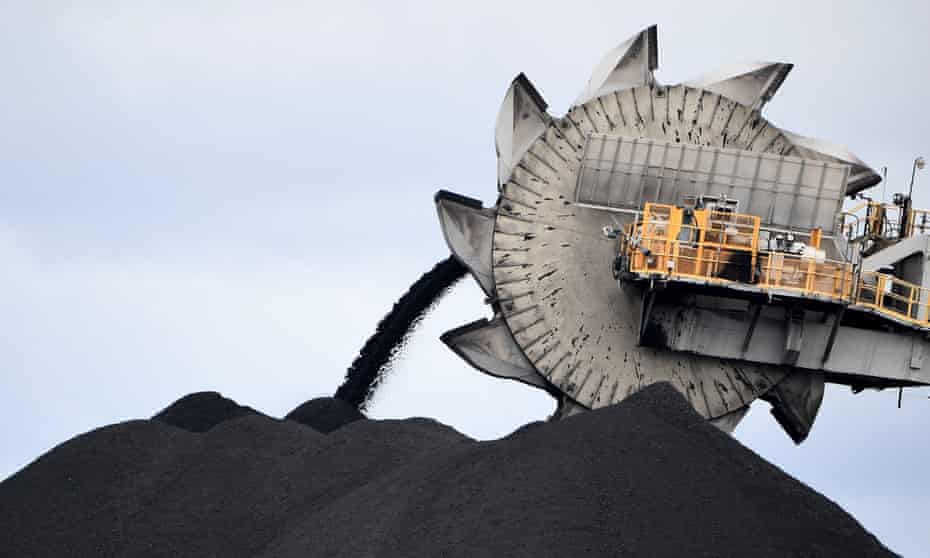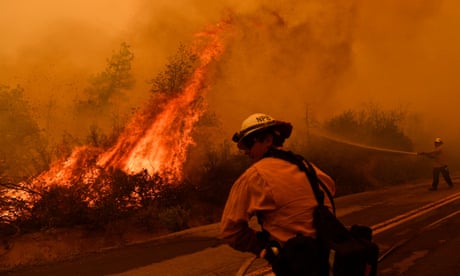Extract from The Guardian
The climate authority has warned it is now or never to cut emissions but will MPs on the campaign trail heed its warning?

The report, the third major release from the IPCC’s sixth assessment of the published evidence, focused on greenhouse gas emissions cuts – what has happened to date and what is necessary from here.
Headlines told part of the story: it was “now or never” if the world was to limit global heating to 1.5C above pre-industrial levels. The report suggests that threshold is already practically out of reach without using technology to suck carbon dioxide from the sky. Keeping heating below 2C, which would trigger damage several magnitudes worse than 1.5C, will require an “abrupt acceleration” of effort after 2030.
In a sane world, this alone may be enough to make it a focus of political discussion, now and through the election. But there was much more. The report suggests a rapid reduction in emissions over the next decade is within the world’s grasp – if leaders, policymakers and investors are motivated. Here are some key lessons relevant to Australia.
We have the technology
Any suggestion there isn’t technology that could deliver deep cuts in greenhouse gas emissions this decade – as scientists and leaders at UN climate talks have repeatedly said is necessary – should be dispelled by this report.
This is a key point in Australia given the Morrison government’s “technology, not taxes” mantra. The Coalition’s focus is on supporting technologies that are not yet commercially viable with an expectation they will deliver cuts mostly after 2030 and closer to 2050. It rejects calls for policies to rapidly deploy clean technology now, equating them to “taxes’’ that increase costs.
The IPCC report tells a different story. It takes a global view and is not policy prescriptive, but says there are options available to cut emissions across all areas that already make economic sense.
In several cases it suggests they would cost less than continuing with the polluting status quo. As the Australian National University’s Prof Frank Jotzo, a lead author on the report, spelled out this week, the IPCC found global emissions could be cut by 50% by 2030 through affordable steps. Jotzo says the general findings of the report are “very readily applied to Australia”.
Solar and wind power are the obvious cases. Their average costs fell by 85% and 55% respectively in the decade to 2019. The IPCC estimates building a lot more of both could cut emissions by about 5bn tonnes a year – nearly 10% of the global total – by 2030 while saving governments and consumers money compared with the alternative. They could deliver nearly 3bn tonnes more for a relatively low cost.
The report lists other options that could lead to cuts that were either cheaper than what we have now or would cost relatively little. Programs that reduce demand for energy are a big one – they save money. Other familiar ideas that could be accelerated include improving buildings’ and industry’s energy efficiency, boosting carbon sequestration in agriculture and stopping native forest clearing.
Other cheap options are yet to get much traction in Australia at the federal level. Transport is a big one. The IPCC’s data suggests shifting to more fuel-efficient cars and trucks and relying more on public transport, bikes and e-bikes makes economic sense and is good for the planet.
These aren’t revolutionary ideas, just ones that have been resisted until now. On fue- efficient cars, the Coalition planned a policy that would have required a reduction in average emissions from the national car fleet – basically, forcing auto companies to sell cleaner cars – but dropped it after industry and internal pushback, despite receiving advice it could benefit the economy by up to $13.9bn. It is part of the reason the Australian car fleet remains dirtier than other comparable countries and the country trails most others in embracing electric vehicles.
Yes, fossil fuels are still the problem
The basic argument is straightforward: if existing fossil fuel plants run for their expected lifetimes, the world will blow the carbon budget to keep the temperature rise below that level. New developments only add to that.
To keep the goals of the landmark Paris climate agreement within reach, countries should embark on a dedicated effort to decommission, cut back and cancel fossil fuel projects – or be prepared to spend even more on nascent technology to remove carbon dioxide from the atmosphere. In reality, both are likely to be needed.
The UN secretary general, António Guterres, thundered this point as the report was released, describing investments in new fossil fuel projects as “moral and economic madness”, and that countries that were increasing fossil fuel production – not activists – were “the truly dangerous radicals” on climate change.
He didn’t name Australia this time – that was last month when he called it a “holdout” on climate change for refusing to strengthen 2030 emissions reduction targets – but the message was clear.
The Morrison government has not been swayed. It is backing a “gas-fired recovery”, including opening up new basins with the potential to release extraordinary amounts of greenhouse gas, as vital for the country’s future after the pandemic. Labor does not oppose the expansion.
Scott Morrison has also declared the country’s coal plants should run for “as long as they possibly can” and the resources minister, Keith Pitt, cheered a recent surge in coal and gas demand after Russia’s invasion of Ukraine.
Australia is the world’s third-biggest fossil fuel exporter, with government economic forecasts suggesting it will export more than 200m tonnes of thermal coal and about 80m tonnes of gas each year between now and 2027.
But the IPCC suggests supporting continued use of fossil fuels overseas can lock in polluting energy sources that are increasingly more expensive than renewables. And attempting to add CCS to fossil fuel energy just makes it even more expensive.
Little evidence CCS will play a major role
This is a big one in Australia, where governments have committed more than $4bn to try to make the technology viable. The Morrison government has kicked in hundreds of millions.
The IPCC makes clear CCS – stopping emissions going into the atmosphere, usually by burying them underground – will have to prove economically viable for fossil fuels to have a future in a world that keeps heating below 2C. Despite having targets that assume more than 3C of warming, Australia is notionally committed to this.

One of the government’s “stretch goals” under its technology investment roadmap is to get the cost of CCS to under $20 per tonne of emissions. The IPCC report suggests this remains a long way off. A table on the likely average cost of technologies available this decade puts CCS among the most expensive. The science body has revised down its assessment of how much of global electricity it expects to come from fossil fuels with CCS in 2040 since the last time it reported from 5% to 3%.
The report says polluting industries want CCS to work as it could “allow fossil fuels to be used longer”, reducing the likelihood of assets becoming stranded. But despite having been promised for decades, and having had billions of dollars in funding committed to it in Australia alone, CCS still only captures about 0.3% of the 34.6bn tonnes of annual global emissions released burning fossil fuels.
It makes a difference when we act
This one shouldn’t be overstated, for obvious enough reasons. Global emissions continue to rise, though the pace has slowed since 2010.
But there is evidence that serious efforts to cut emissions work. In 2016, steps such as accelerating available technology, backing energy efficiency and slowing deforestation lowered the global total by 5.9bn tonnes. That’s about a 10% cut.
In Australia, the government points to evidence that national emissions are down about 20% since 2005 – and has called on other countries to “follow our leadership” – but the headline number relies on greenhouse accounting sleights of hand that mask the reality.
Fossil fuel emissions – the main game – were rising before the Covid-19 lockdowns hit due to increases from transport, mining and major industry. Government projections suggest those sectors will do little to reduce their impact before 2030.
The claimed reduction since 2005 mostly happened when Labor was in power, between 2007 and 2013. Even then, it was mostly due to state policies that slowed the country’s extraordinary pace of forest destruction for agriculture, particularly in Queensland. Australia is still clearing native forests, just at a slower pace. Under greenhouse accounting, that counts as a cut in annual emissions. But it is not evidence of a country transforming its economy.
The IPCC report suggests there is another way ahead. A question for MPs on the campaign trail might be: who is listening?
No comments:
Post a Comment